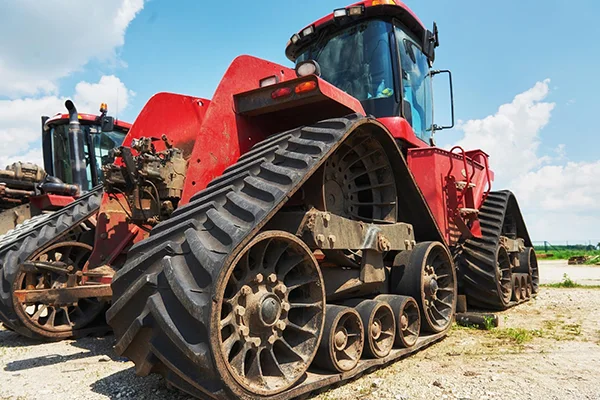Bearings are integral components in heavy machinery, ensuring smooth and efficient performance. Selecting the right bearing can significantly influence the operational efficiency and lifespan of equipment. However, not all bearings are created equal; various factors influence their suitability for differing applications. Understanding these factors is vital for engineers and machine operators alike, particularly in industries that place specific demands on performance.

When it comes to heavy machinery, selecting the appropriate bearing type is crucial. Different applications may require specialized bearings that can withstand various loads and environmental conditions. The two primary types of bearings are rolling-element bearings and plain bearings. Rolling-element bearings, such as ball and roller bearings, prove advantageous in applications requiring low friction and high speed. On the other hand, plain bearings are preferred in applications with heavy loads but lower speed demands. Each type has its advantages and disadvantages depending on the context of use. For instance, if durability under heavy loading conditions is essential, one might lean towards plain bearings, while ball bearing technology may be ideal for applications that focus on speed and decreased friction. Comprehensive knowledge of these types allows for better-informed decisions in selecting the right bearing, aligning with operational requirements.
An essential factor in bearing selection is understanding the load characteristics it must support. Bearings must withstand radial loads, axial loads, or a combination of both. Radial loads act perpendicular to the shaft, while axial loads run parallel to the shaft. The load capacity directly impacts the lifespan and functionality of the bearing. For example, a bearing subjected to loads exceeding its rated capacity is at risk of premature failure, leading to costly downtimes and repairs. Calculating the actual loads experienced during operation informs the selection process. Factors such as machinery design, weight distribution, and operational conditions must all be evaluated. In some cases, consulting load charts or manufacturer specifications helps determine the most suitable bearing type relative to the expected operational demands.
The operating environment of heavy machinery plays a significant role in bearing performance. Conditions such as temperature, humidity, dust levels, and exposure to chemicals can affect bearing integrity. For instance, extreme temperatures can alter the bearing materials, potentially leading to accelerated wear and tear. Similarly, humid and dusty environments may introduce contaminants that compromise the bearing’s effectiveness over time. In environments where exposure to water or chemicals is likely, selecting bearings with corrosion-resistant materials becomes necessary. This attention to material choice recognizes that proactive measures can enhance bearing longevity and reliability. Thus, understanding these environmental factors directly influences bearing selection, ensuring optimal performance across various conditions.
Another crucial aspect of bearing longevity is proper maintenance and lubrication. Regular maintenance schedules help monitor bearing conditions and catch issues early, reducing the likelihood of catastrophic failures. Proper lubrication is essential in minimizing friction, dissipating heat, and protecting against contamination. There are various lubrication methods available, each with its benefits. Grease lubrication, for example, provides a thicker barrier against contaminants, while oil lubrication can better dissipate heat. The choice between these methods typically depends on the specific operational conditions including speed, load, and environmental factors. Combining effective maintenance strategies with the right lubrication methods can significantly enhance bearing performance, mitigating wear and prolonging service life.
In any industrial setting, the balance between cost-effectiveness and performance cannot be ignored. While premium quality bearings may present a higher initial investment, their durability and reliability can yield significant savings in the long run. Weighing the costs against potential downtime or failures is vital in determining the most cost-effective solutions. Decision-makers should consider the total cost of ownership, which includes not only the purchase price but also maintenance, operational efficiency, and the likelihood of needing replacements. Investments in high-quality ball bearings can translate into reduced maintenance needs and extended machinery lifespans, ultimately delivering a favorable return on investment.

Selecting the right bearings for heavy machinery involves several critical factors, including understanding bearing types, load capacity, environmental conditions, maintenance practices, and cost-effectiveness. By considering these factors, engineers can ensure optimal performance and longevity for machinery, ultimately contributing to greater operational efficiency. The right bearings not only support the mechanical systems but also provide reliability in demanding environments, allowing industries to achieve their objectives seamlessly.
